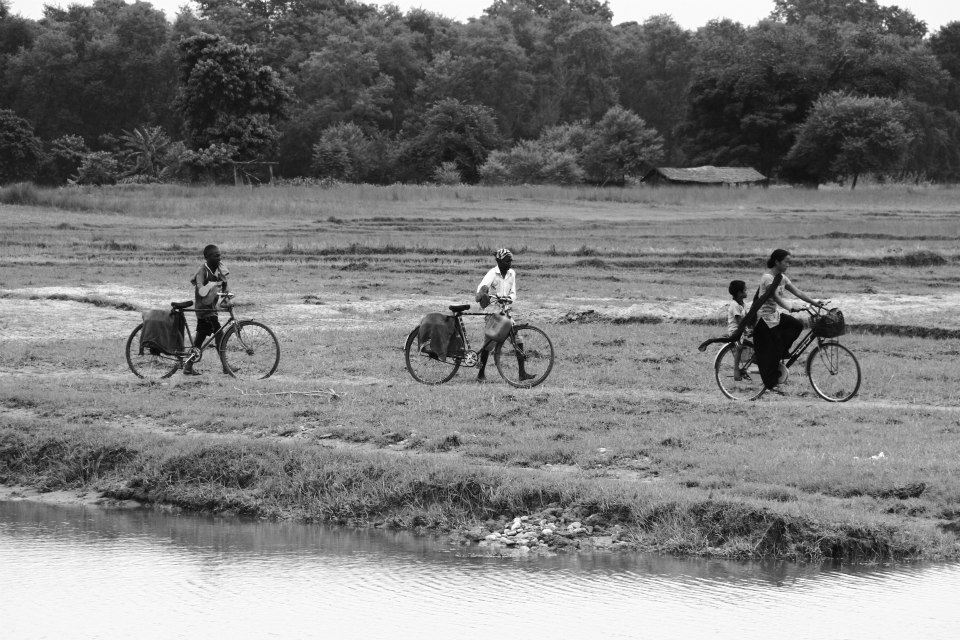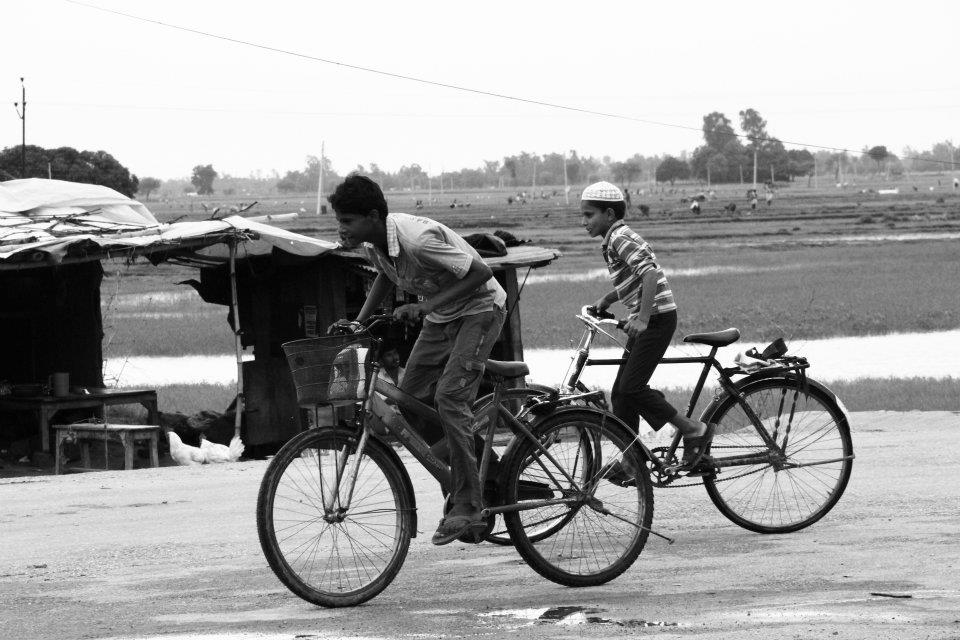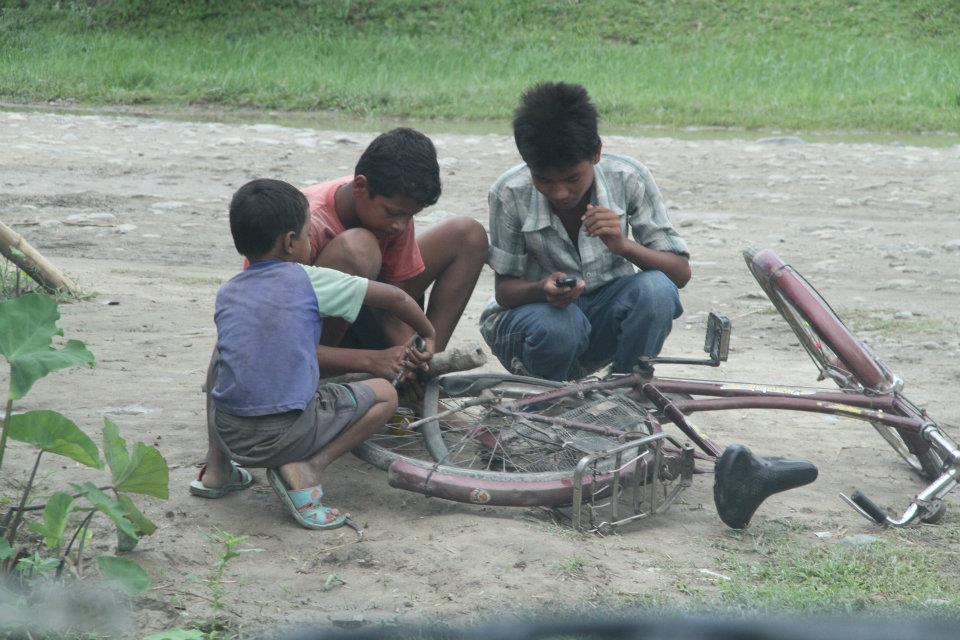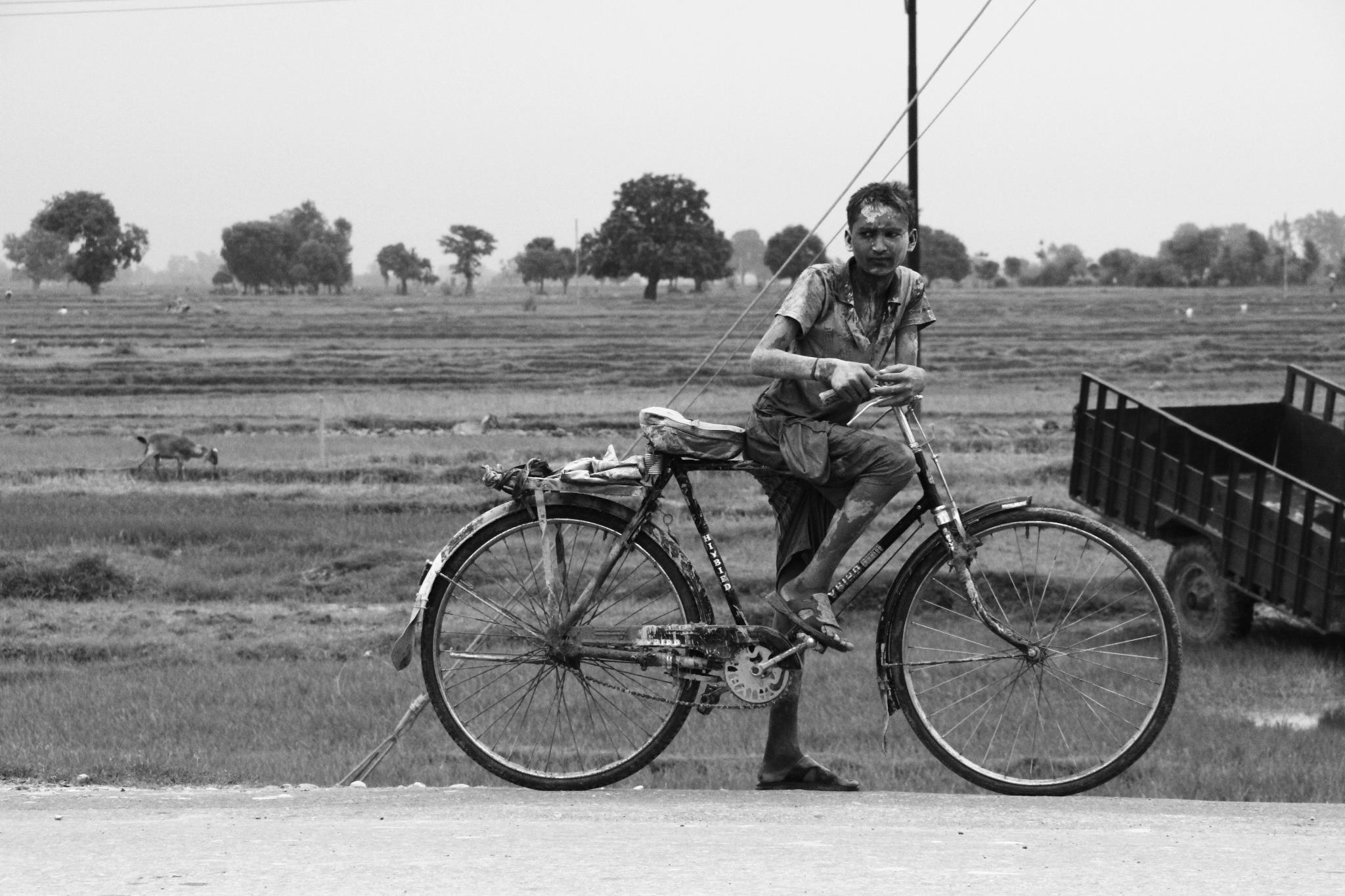Rural Nepal | Working Class | Living Standard

This photo album was just meant to be a photo feature with collection of some, presumably, random works of Manish Misra – its creator. But I couldn’t resist adding some context to it - to highlight how the photo work that were clicked some eight years ago actually originated and the thought process behind. In the collection, Manish shares his raw work with us - where he has captured different shades of human lives vis-à-vis bicycles through photos taken in different parts of Terai region.

While I was looking to create some sleek photo albums for the publication and had shared this to Manish, he offered me his own compilation, lying idle in his Facebook account for years, advising me to check them out and see if I can make anything out of them.

At first, I didn’t pay much attention because Manish, as I know him personally - a close friend of mine - is a flamboyant personality, with a nature I’d say hurried. Taking photos require calm spirit, that’s my naïve understanding, understand your subject matter, analyse your subject, take time, and wait and wait, qualities I doubted he’d have time for, although I knew his camera skills and passion.
I had an intrinsic bias that his photos would be just some random clicks, nothing deep, nothing creative, no thought process. Not every photo should tell you a story but my opinion about photos is that they should be meaningful, present some form of account, linear or the opposite, even if they sound too simple – otherwise there’s no point in taking them to an audience. I really like it how The Record Nepal does it – take for instance their recent photo essay - Influx.









Anyways, I reluctantly checked out his album, and just skimmed them when I visited them for the first time. My initial thoughts after checking them converged with my bias - some random photos that my friend clicked during his work travels. I knew I would use some of them, just so that my website won’t come out as some lousy empty vessel, filled with verbose, lacking soul, when it comes out in its new layout.
Few weeks later, I visited the album again to sort out the photos and download them. I wanted to give them some light touch – play with contrast and brightness here and there or just use the auto-correct option – despite lacking knowledge about the editing process.
But as I screened them one by one, I felt a pattern – perhaps they aren’t hit and miss, and there is a context to it after all. I called Manish and asked if he would respond to some open questions about the photos. He happily agreed. I enthusiastically wrote a list of questions and emailed him quickly.
I waited. Reminded him time and often. He never responded. He’d invite me to play a game or two of pool, but his responses never arrived. It was just plain stupid thing to ask him write to a set of questions as if it was some kind of development evaluation. I should have also figured it out after knowing the guy for more than a decade now – that he’d not entertain it.






So I set up a meeting to have some casual chat about the photos.
My assumption was that it would be predominantly about poverty, hardships, inequalities, social and geographical barriers and many other socio-economic issues that I never get sick and tired of discussing about.
Manish, on the contrary, presented a different perspective. Not that his photos didn’t touch upon those issues, but it weren’t explicitly about and intended towards those matters.
“When I grew up, my father depended on those cycles to commute back and forth from his work station – the Janakpur cigarette factory. I grew up watching my elder brother cycling to his school and college. I remember my uncle pedalled for almost 18 kilometres from Indian border just to visit us,” Manish shares. “Bicycles are close to my heart. I don’t ride them anymore but they are an essential part of my childhood memories. I got one when I was in eighth grade and was part of me until my high school.”
“It is one of the finest inventions of human mind that has simplified their works, a cheaper mode of transportation, and a source of livelihood. It’s a way of life for us,” Manish elaborates.




In his photos, there are a group of labours returning to their home from brick factory, women carrying their children and moving livestock fodder and cycles shouldering unimaginable loads (you have to give it for that skill and balance).
There are children riding bicycle for commuting to school and back, and some to their work stations, some are just having fun riding together with their brothers and friends, others are learning by repairing their vehicle.
“It is luxury for the working class, their best friend, their teacher and life-saver, and most importantly they give you a sense of freedom”, he further emphasises.
Manish then reminds me of Province 2’s Beti Bachau-Beti Padhau (Save Daughters - Educate Daughters) campaign that distributed 1,000 bicycles to school going girls in 2019. “Bicycles are also a good source of freedom for girls, and has been aiding many school going girls and even ones who work. It’s equivalent to giving life skill and tool at the same time.”
It’s been eight years since the photos were taken. Things have changed, and Manish agrees to it but not entirely.
“In present times”, as Manish observes, “the use of bicycle has declined - thanks to influx of remittance income, people can afford bikes now. Then there are improvements in public transportation. But bicycles are still an essential part of low-income people.” “I’d personally like to see more improvements in the public transportation so that it works for all; people can commute safely and without much labour and sweat, use their surplus money in other productive areas and yet own and use bicycles for their short distance commutes and simple purposes.”


Manish also shares his observation that the rural hilly parts of Nepal are less reliant on bicycles. “In rural hilly regions, riding bicycles are much tiring due to the terrain, which is why it failed to trend there. In Terai, it is flatter but humid, and yet, when the breeze hits you, it feels refreshing and liberating.”
But bicycles are everybody’s friends now. In urban centres, there are people who use it for the same reasons as in Terai. “How do some workers deliver gas cylinders and water jars right at your doorstep?” Manish points out to me.
The well-off and their kids use it for health reasons and recreation purposes. These are expensive bicycles catering comfortable rides even on rough surface thanks to their quality comfort features. There are also those who’d prefer cycling on daily basis commuting back and forth to work so that it keeps them fit, but avoid it because our roads are so unsafe. “One thing is they all have alternatives, don’t they?”
“You can think of inequality there, that’s why good public transportation is so important. There’s so much body fatigue and stress on muscles and fatality and injury risks with all those longer and harder rides, but people refuse to recognize all those risks and hardships because they are so used to it and they don’t have alternative either,” Manish finally offers me, with a sarcastic smile, what I had initially thought I’d be getting into and perhaps longed for during the entire conversation.

I could have shot some more questions at Manish and stretched the conversation, but he was eloquent enough. We parted after that, and I came back to write this. In the end, I left the photos unedited because they were more expressive and emotive the way they were taken.
**[We will bring forth more photo stories – [un]adulterated & [un]censored - in the future]**
Text by Sabin Jung Pande
Read More Stories
Kathmandu’s decay: From glorious past to ominous future
Kathmandu: The legend and the legacy Legend about Kathmandus evolution holds that the...
Kathmandu - A crumbling valley!
Valleys and cities should be young, vibrant, inspiring and full of hopes with...
Nepal to receive $36.1 million to mitigate GLOF risks
Nepal is set to receive $36.1 million in mitigating one of the escalated...